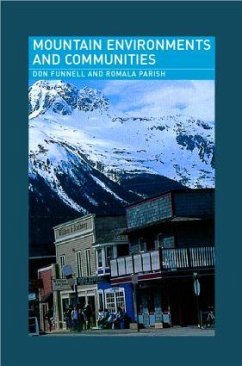DO MOUNTAIN ENVIRONMENTS MAKE THEIR COMMUNITIES DIFFERENT? Mountains continue to hold a fascination for residents and visitors alike. Around 10 per cent of the world's population actually live in mountain regions and 25-30 per cent directly rely on mountain resources. They are of great religious significance, as well as a global focus for tourism. The distinctive nature of mountain regions is now formally recognised as part of the UN Agenda 21, and 2002 has been declared the International Year of Mountains. Mountain Environments and Communities explains the background physical environment and then explores the environmental and social dimensions of mountain regions; three themes emerge from the book: -- Mountain communities are not as 'conservative' as some popular accounts portray. Particularly in developing countries, they adopt highly innovative lifestyles and must be resilient in the face of constant challenges and conflicting pressures from their physical and political environment. -- The altitudinal characteristics of mountains generate specific sets of physical processes, but their significance is highly variable in time and space and depends as much on the social as the physical context. Biodiversity and conservation issues are emphasised over and above hazards. -- Although there has been a concerted effort to develop specific policies of sustainable development for mountain regions, there remain considerable problems to be surmounted before these can be fully achieved. This critical review of the concepts currently employed in mountain research draws upon a wide range of examples from developed and developing countries. The dynamics of mountain life are describedthrough both historical accounts of village-based systems and examples of the contemporary impact of global capital and sustainable development strategies.








